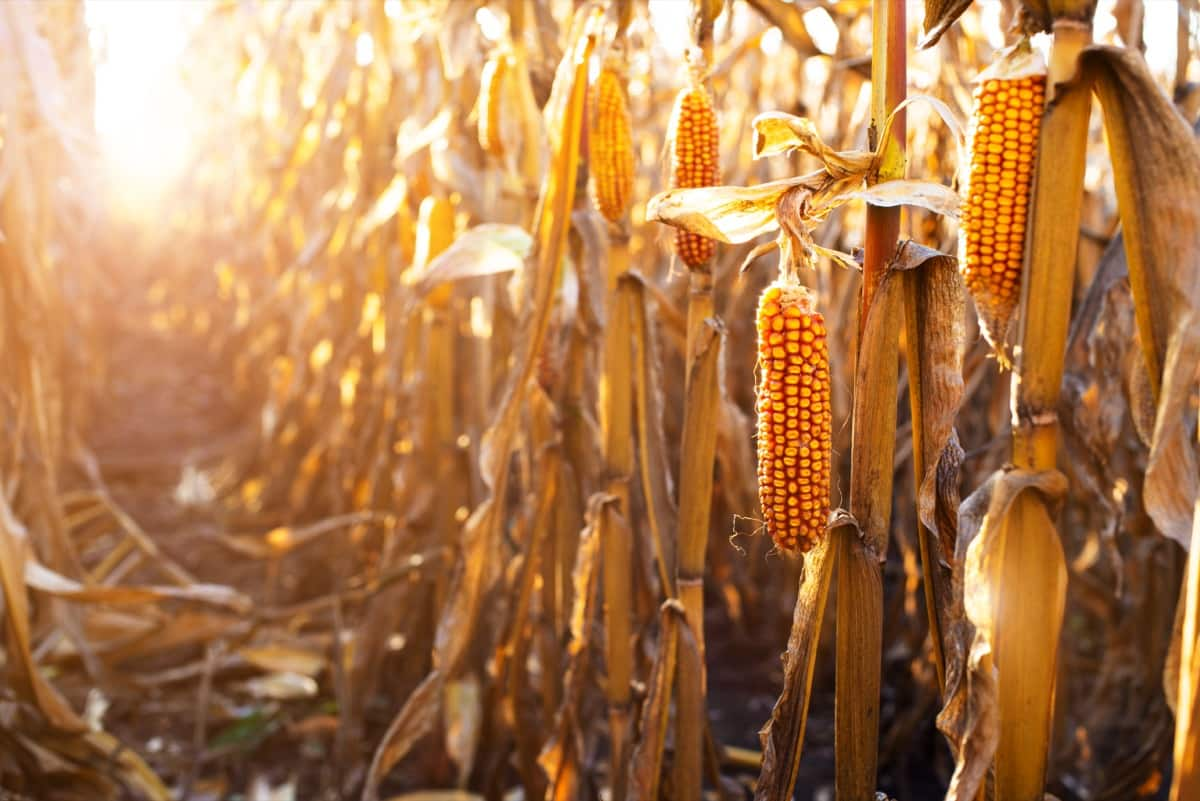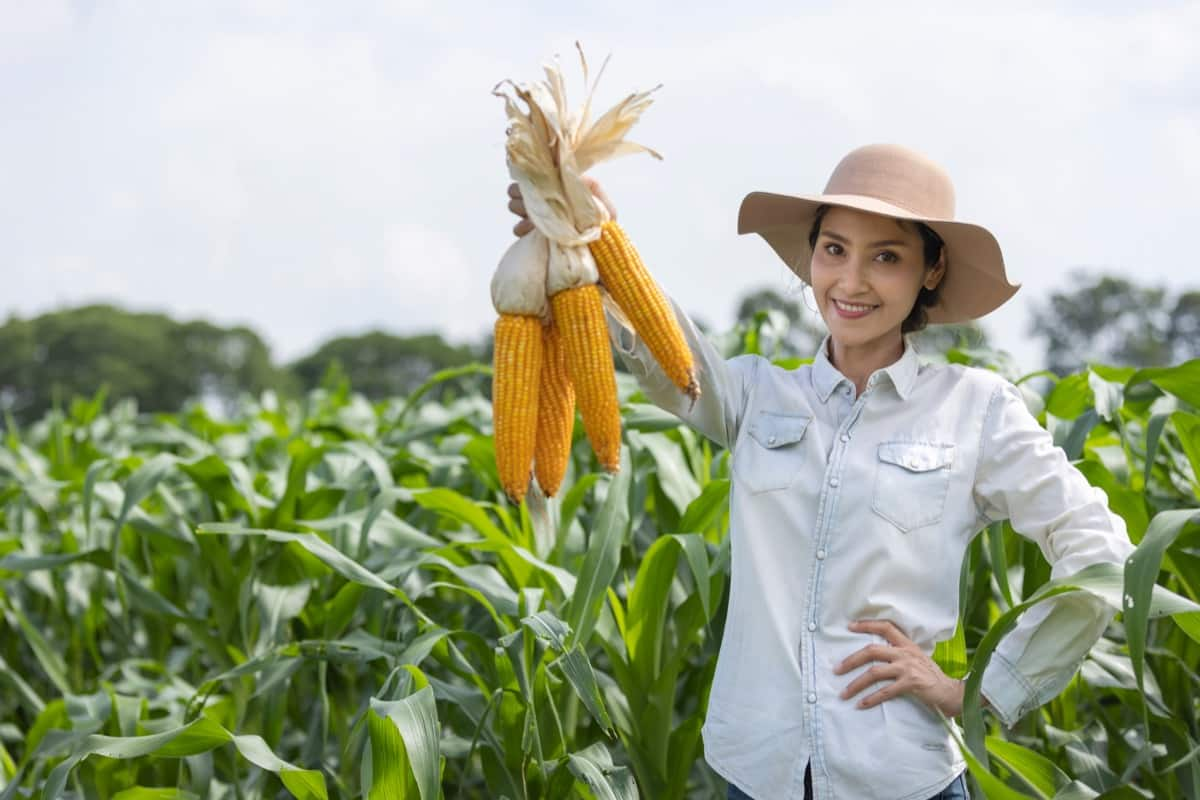Corn farming is a significant part of Minnesota’s agricultural sector, with the state being the fourth-largest corn producer in the United States. With the right knowledge, resources, and planning, you can start your own corn farming venture in Minnesota and contribute to this thriving industry. Here we learn about a step-by-step plan for planting to harvesting corn, including essential information on land preparation, planting corn spacing, Minnesota’s climate for corn planting, and the time it takes to grow corn from seed to harvest.

How to Start Corn Farming in Minnesota
Land Preparation
Before you begin planting your corn, preparing the land to ensure optimal growth and a healthy harvest is essential. First, you should do soil tests to identify the land’s nitrogen levels, pH, and inadequacies. You’ll be able to choose the right fertilizers and amendments with this data in hand. Proceed by clearing the land of any debris, such as rocks, weeds, and plant remnants from previous crops. This will ensure that the soil is ready for tilling.
Tilling is breaking up the soil to create a loose, aerated environment that allows for better root growth and nutrient uptake. It’s essential to till the soil to a depth of about 8 to 12 inches to break up any compacted layers and promote proper root development. After tilling, you can apply any necessary fertilizers and amendments to enhance the soil’s fertility and structure.
Planting and Spacing
Once the land is prepared, it’s time to plant the corn seeds. Minnesota’s ideal time to plant corn is between late April and early May, as the soil temperature should be consistently above 50°F for optimal germination. When planting, ensure the seeds are placed about 1.5 to 2 inches deep and spaced appropriately to promote healthy growth.
Spacing is a crucial factor in corn farming, affecting the crop’s yield and overall health. Generally, corn plants should be spaced about 30 inches apart within rows, with rows spaced around 30 to 36 inches apart. This spacing allows for adequate sunlight and air circulation while reducing competition for nutrients and water.
Minnesota’s Climate for Corn Planting
Minnesota’s climate is suitable for corn production, with warm summers and relatively cool, wet springs providing the necessary growth conditions. The average growing season in Minnesota lasts around 120 to 140 days, with corn requiring a minimum of 90 to 120 frost-free days to reach maturity, depending on the variety. It’s crucial to monitor weather conditions throughout the growing season and adjust your farming practices as needed to optimize your crop’s health and yield.
Corn Care and Maintenance
Caring for your corn crop involves several key practices that ensure its health and productivity. One crucial aspect is weed management, as weeds compete with corn plants for nutrients, water, and sunlight. Utilize a combination of pre-emergent and post-emergent herbicides, along with mechanical cultivation, to keep weeds under control. Another essential component of corn care is proper irrigation. Corn requires consistent moisture, particularly during critical growth stages such as germination, pollination, and grain fill.
In Minnesota, rainfall is often sufficient to meet the crop’s water needs, but supplemental irrigation may be necessary during dry periods. Monitor soil moisture regularly and irrigate as needed to maintain adequate water levels. Fertilisation is especially important in corn cultivation since it guarantees that the plants will get the nutrients they need to flourish and provide a plentiful crop. In addition to the initial fertilization during land preparation, you may need to apply additional nitrogen and other nutrients throughout the growing season.
In case you missed it: How to Start Corn Farming in Illinois: A Step-by-Step Maize Production Guide for Planting to Harvest

Regular soil testing and leaf tissue analysis can help you determine the appropriate nutrient application rates and timing for your specific field conditions. Pest and disease management is another critical aspect of corn care. Regularly scout your fields to identify potential issues early on and take appropriate measures to control them. Common pests in Minnesota cornfields include corn rootworms, European corn borers, and armyworms.
Employ integrated pest management practices, such as crop rotation, biological control agents, and targeted pesticide application, to keep these pests in check. Corn crops in Minnesota are susceptible to a variety of diseases, including grey leaf spot, northern corn leaf blight, and Goss’s wilt, among others. Monitor your fields for signs of these diseases and implement management strategies, such as planting disease-resistant varieties and applying fungicides when necessary.
Time Taken to Grow from Seed to Harvest
The time it takes for corn to grow from seed to harvest depends on the specific corn variety and environmental factors like temperature and sunlight. Generally, corn takes between 90 and 120 days to reach maturity, with early-maturing varieties requiring less time than late-maturing ones.
In Minnesota, corn harvest typically occurs between late September and early November, depending on the planting date and growing conditions throughout the season. As the corn plants mature, monitor them for signs of physiological maturity, such as the formation of a black layer at the base of the kernels and a moisture content of about 30%. When these indicators are present, the corn is ready for harvest.
Harvesting and Storage
Proper harvesting techniques are essential to ensure a high-quality corn crop. Combine harvesters are typically used to harvest corn in Minnesota. Before harvesting, ensure that your combine is set up correctly to minimize grain loss and damage. Adjust the combine’s settings as needed based on the crop’s moisture content and other factors.
In order to avoid rotting and the development of fungi while the maize is being stored, it should be dried to a moisture level of around 15% after it has been harvested. You can either dry the corn in the field or use mechanical dryers to expedite the process. Once the corn is adequately dried, store it in a clean, well-ventilated, and moisture-resistant facility to maintain its quality.
In case you missed it: How to Grow Baby Corn on Terrace: A Guide for Planting to Harvest

Conclusion
Starting a corn farming venture in Minnesota can be rewarding and profitable with proper planning, knowledge, and resources. By following the step-by-step production guide outlined above and paying close attention to land preparation, planting and spacing, climate considerations, corn care, and harvesting practices, you can successfully grow corn from seed to harvest in Minnesota. Stay vigilant and adaptable to the ever-changing environmental conditions, and your corn farming business will thrive in the Land of 10,000 Lakes.
- Ultimate Guide to Ossabaw Island Hog: Breeding, Raising, Diet, and Care
- Ultimate Guide to Juliana Pig: Raising Facts, Size, Diet, Care, and Lifespan
- Raising Lleyn Sheep: Disadvantages, Price, Uses, Characteristics, and Care
- Ultimate Guide to Meishan Pig: Breed Facts, Breeding, Raising, and Care
- Ultimate Guide to Teacup Pigs: Raising, Diet, Lifespan, Cost, and Care
- Guide to Raising Poll Dorset Sheep: Facts, Profile, Characteristics, Uses, and Care
- Ultimate Guide to Bighorn Sheep: Characteristics, Diet, Lifespan, Breeding, and Lifecycle
- Ultimate Guide to Raising Katahdin Sheep: Farming Facts, Breed Profile, Uses, and Care
- Ultimate Guide to Raising Oreo Cows: Belted Galloways Farming Facts, Profile, Uses, and Care